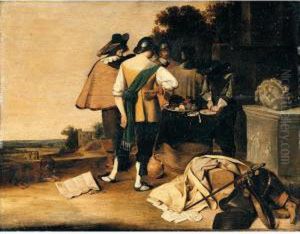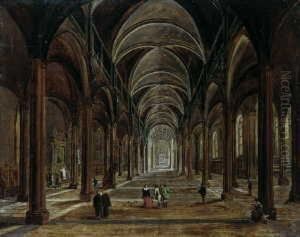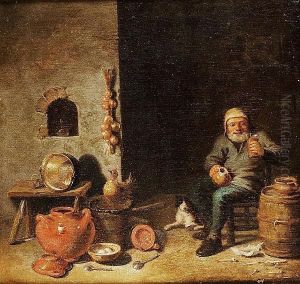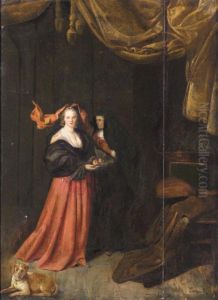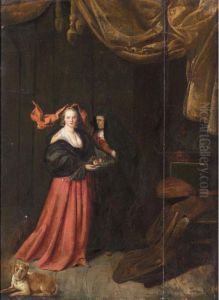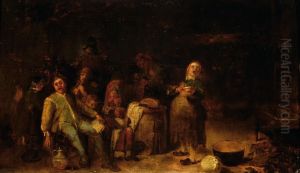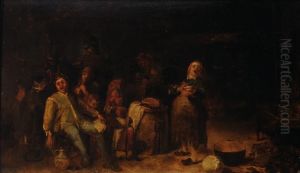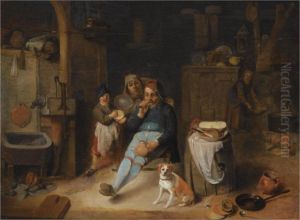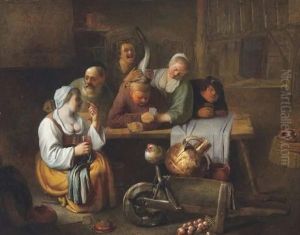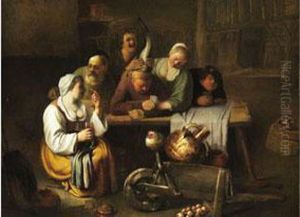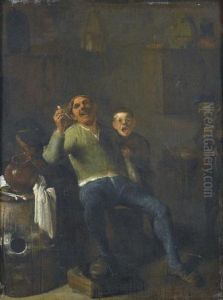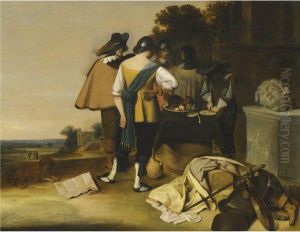Pieter Jacobsz. Duyfhuysen Paintings
Pieter Jacobsz. Duyfhuysen was a Dutch painter known for his work during the 17th century, a period often referred to as the Dutch Golden Age of painting. Born in 1628 in Rotterdam, Netherlands, Duyfhuysen is recognized for his genre scenes and portraits which often depicted everyday life with a keen eye for detail and a strong emphasis on domestic interiors and figures.
Although not as widely known as some of his contemporaries, such as Rembrandt or Vermeer, Duyfhuysen contributed to the rich tapestry of Dutch art in this period. His paintings are characterized by their meticulous attention to the textures and materials within domestic settings, as well as the expressions and gestures of his subjects. His work displays the influence of other Dutch artists, including the likes of Pieter de Hooch and Gerrit Dou, both of whom were masters of interior scenes and genre paintings.
The exact details of Duyfhuysen's life and career are relatively obscure, and not much is documented about his artistic training or his personal life. It is believed that he may have been a student or follower of the aforementioned Dutch painters, adopting similar themes and styles in his work.
Duyfhuysen's paintings were appreciated for their narrative quality, often capturing moments that seem to tell a story beyond what is immediately visible. This narrative element, combined with his skillful use of light and shadow, allowed him to create a sense of depth and atmosphere in his compositions.
Despite his talents, Duyfhuysen remains a lesser-known artist from the Dutch Golden Age, and as a result, his works are not as prominently featured in major museum collections as those of his peers. The date of his death is not well documented, which further contributes to the enigmatic nature of his biography.
Today, Pieter Jacobsz. Duyfhuysen's existing works are valuable for their representation of 17th-century Dutch culture and artistry, and they continue to be studied by art historians and enthusiasts who are interested in this rich period of art history.
